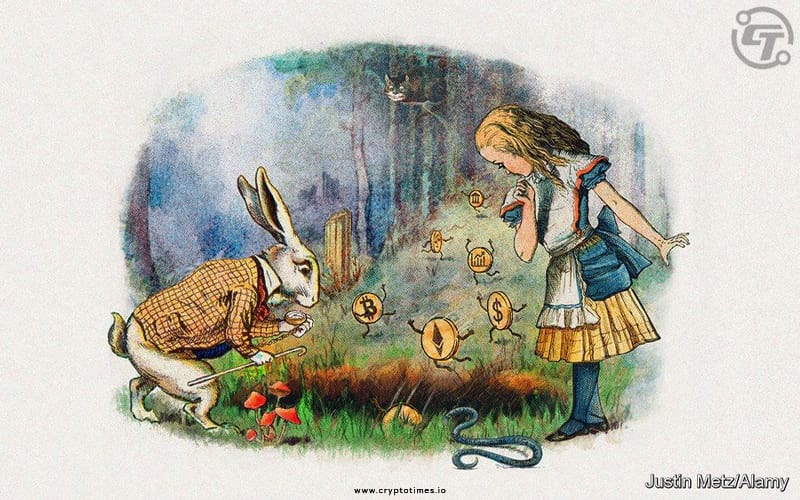In Brief:
- The Economist intends to sell the DeFi front cover as an NFT.
- The auction will take place on October 25th.
- The profits from the auction will go to TEEF, an independent journalistic charity.
The British journal “The Economist” has announced that the DeFi front cover of its September 18 edition will be auctioned off as a non-fungible token (NFT).
On October 25, the cover, which parodied an Alice in Wonderland scene by placing Alice and the white rabbit on the verge of a rabbit hole filled with tokens, will be offered. With the support of the platform Foundation, it was turned into an NFT.
According to a press release from The Economist, the purpose is to demonstrate the decentralised technology’s potential.
The Economist will be auctioning off an NFT for the first time, although it isn’t the first time a major news organisation has done so. A New York Times column was purchased for a staggering $560,000 in March. Past Twitter posts have also been coined and sold as NFTs for exorbitantly high rates.
The Economist Educational Foundation (TEEF), an independent charity focused on news, will receive the proceeds from the sale, minus fees, transaction costs, and taxes. The magazine will keep 10% of the royalties produced by future secondary sales of the NFT, with the money going to TEEF as well.
With the help of The Economist’s cover designer Graeme James, British artist Justin Metz created the artwork for the DeFi cover, which was subtitled “Down the rabbit hole: The promise and perils of decentralised banking.”
Alice Fulwood, a finance correspondent from the magazine said,“by selling our ‘Down the rabbit hole’ cover as an NFT we are now, in our own small way, journeying down the rabbit hole ourselves, in a fun experiment that will hopefully also raise money for a worthwhile cause.”
Similarly in July South China Morning Post, established “ARTIFACTS,” a standardized model for documenting historical accounts and assets as NFTs on the blockchain.






